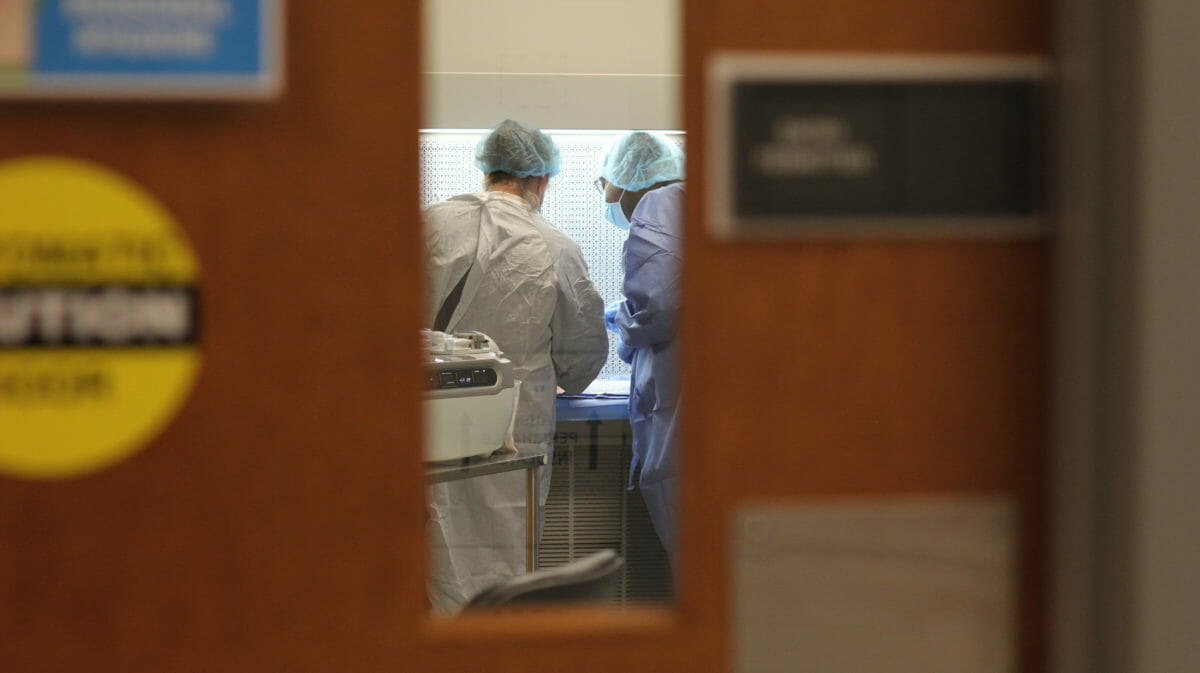New Research Aims to Stop Biological Time, More Help for Those Waiting
Every single day is a battle with the clock to recover and transplant an organ. The time from donation to transplant per organ is very limited (ranging from 4 hours to 24 hours). Due to ground-breaking research, this timeline is about to change.

LifeSource is proud to support the inaugural launch of the Biostasis Research Institute, aimed at eliminating storage limitations on organs, tissues and other large biological systems. This initiative aims to reduce time on the waiting list for future transplant recipients and allow for many others to become organ donors – a rare opportunity due to current medical criteria. This incredible work will advance the LifeSource mission to honor the heroism of every organ donor by maximizing the impact of their life-saving gifts.
After decades of research, the Biostasis Research Institute will activate two academic research centers dedicated to the cryopreservation of living organs and tissues – a first in U.S. history. This ground-breaking research is happening just a few miles from LifeSource at the University of Minnesota.
Behind the Innovation: Cryogenic Storage of Organs
The Organ and Tissue Preservation Center will focus on technologies to safely and rapidly rewarm cryopreserved organs and other living systems.
This center is housed within the University of Minnesota Institute for Engineering in Medicine (IEM) and will be led by the IEM Director, Dr. John Bischof, and Department of Surgery faculty member, Dr. Erik Finger.
The process would allow organs to be stored in a liquid nitrogen freezer for days or even years. The lower the freezer temperature, the longer the preservation time. Here is how it works:
- LifeSource coordinates with donor families who have chosen to participate in the research program.
- The U of M team adds biological anti-freeze molecules to the organ, and then they lower the temperature in such a way that the organ will not crystalize. Once the organ is placed into a glass, the metabolism essentially stops. Effectively, preserving the biological system indefinitely.
- When ready for use, the organs are rewarmed and reanimated.
This last step of rewarming and reanimating the organs after being frozen has been a big challenge. For instance, if a frozen organ is reheated too quickly or unevenly, it will crack. The University of Minnesota team has developed new methods and technologies that are showing promise in fixing these issues. One method is to profuse the organ with iron oxide nanoparticles, which are reactivated then uniformly and rapidly return the organ to full function.
What is The Current Timeframe for Preserving and Transplanting Organs?
Each year, roughly 3,500 kidneys and 3,000 livers from U.S. donors cannot be matched to an accepting recipient before their preservation limit expires, along with many hearts, lungs, and pancreata.
Currently, each organ has a specific timeframe in which the transplant must occur once the donation is recovered:
- Heart: 4 – 6 hours
- Lungs: 4 -8 hours
- Liver: 8 – 12 hours
- Pancreas: 12 – 18 hours
- Intestines: 8 – 16 hours
- Kidneys: 24 – 36 hours
Biostasis has the potential to extend matching over days or weeks instead of hours. This would also remove the hurdle of geography, creating the ability to place organs over longer distances, eliminating the risk of delayed or cancelled flights or operating room schedules.
How Will This Research Impact the People Currently Waiting for a Life-Saving Transplant?
Saving lives is always the highest priority. If an individual’s organs are suitable for transplant, we must, and we will, find a patient to receive the transplant. But in many situations, if transplant is not possible, research is possible.
When people donate, they can help someone with the gift of life right now, but there is also the opportunity to help someone in the future through research if transplant is not possible. The U of M teams plan to start testing the system on donated human organs that are not able to be transplanted later this summer (2021).
“It would be a tremendous game-changer, not only in the time itself, but also being able to find that perfect match, the best organ for that particular patient,” LifeSource CEO Susan Gunderson said. “For children in particular, we are really challenged with finding the right size match organ at the time a particular patient needs it. That’s devastating. I think this brings comfort to those patients who are waiting for a transplant today knowing that the science continues to develop. It’s a promise of hope.”
 Skip to main content
Skip to main content
